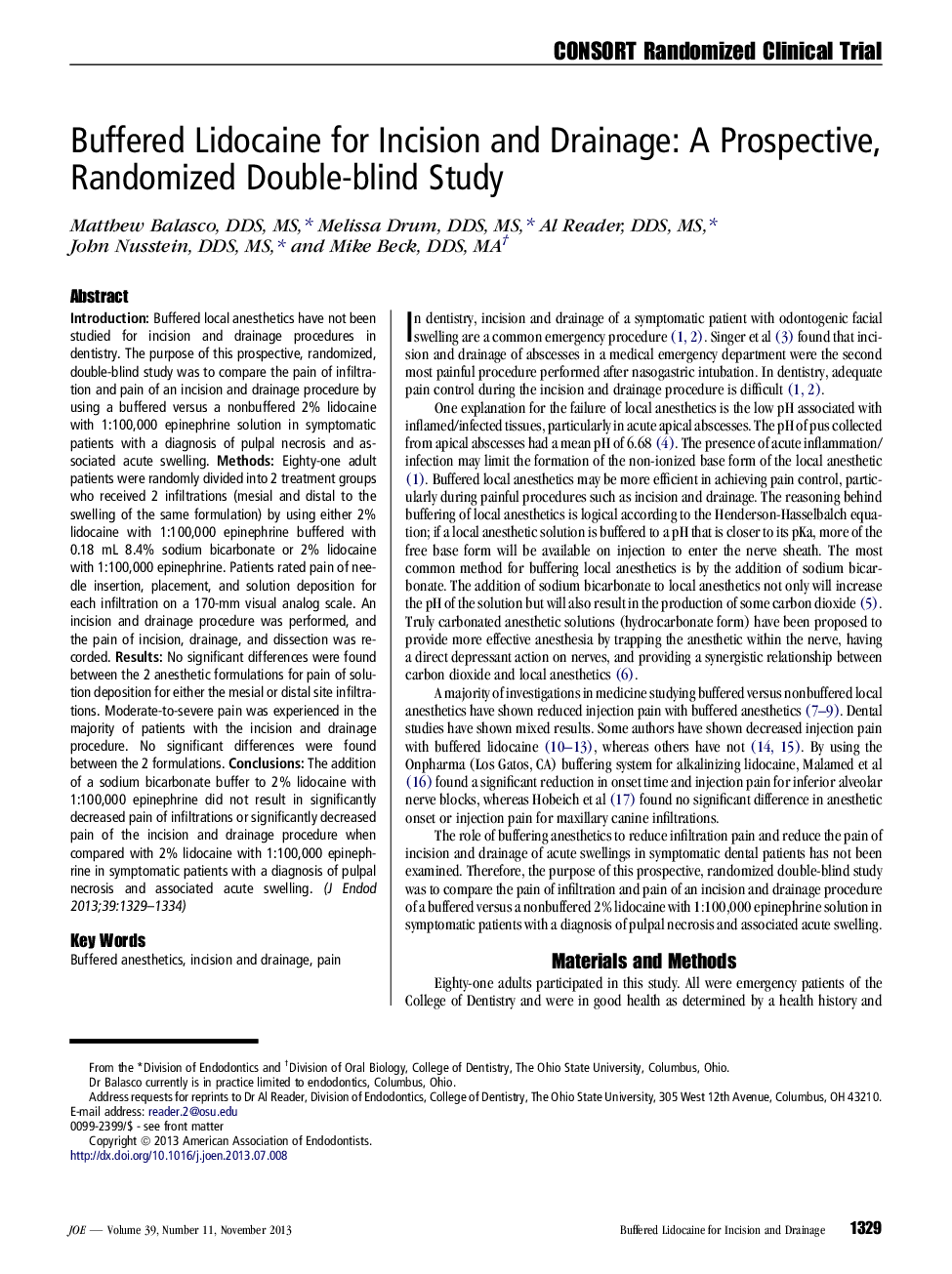| Article ID | Journal | Published Year | Pages | File Type |
|---|---|---|---|---|
| 3146953 | Journal of Endodontics | 2013 | 6 Pages |
IntroductionBuffered local anesthetics have not been studied for incision and drainage procedures in dentistry. The purpose of this prospective, randomized, double-blind study was to compare the pain of infiltration and pain of an incision and drainage procedure by using a buffered versus a nonbuffered 2% lidocaine with 1:100,000 epinephrine solution in symptomatic patients with a diagnosis of pulpal necrosis and associated acute swelling.MethodsEighty-one adult patients were randomly divided into 2 treatment groups who received 2 infiltrations (mesial and distal to the swelling of the same formulation) by using either 2% lidocaine with 1:100,000 epinephrine buffered with 0.18 mL 8.4% sodium bicarbonate or 2% lidocaine with 1:100,000 epinephrine. Patients rated pain of needle insertion, placement, and solution deposition for each infiltration on a 170-mm visual analog scale. An incision and drainage procedure was performed, and the pain of incision, drainage, and dissection was recorded.ResultsNo significant differences were found between the 2 anesthetic formulations for pain of solution deposition for either the mesial or distal site infiltrations. Moderate-to-severe pain was experienced in the majority of patients with the incision and drainage procedure. No significant differences were found between the 2 formulations.ConclusionsThe addition of a sodium bicarbonate buffer to 2% lidocaine with 1:100,000 epinephrine did not result in significantly decreased pain of infiltrations or significantly decreased pain of the incision and drainage procedure when compared with 2% lidocaine with 1:100,000 epinephrine in symptomatic patients with a diagnosis of pulpal necrosis and associated acute swelling.
